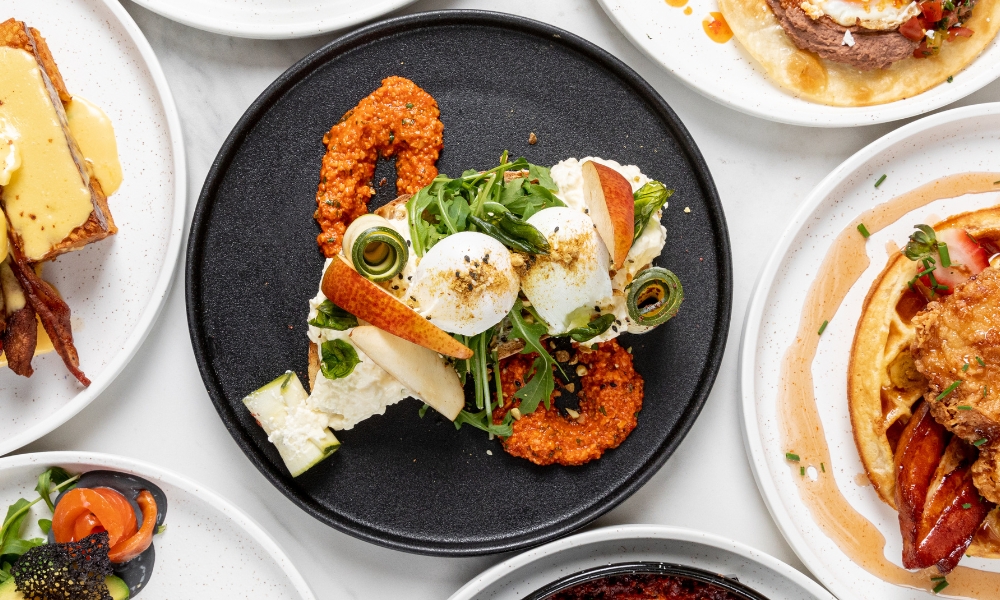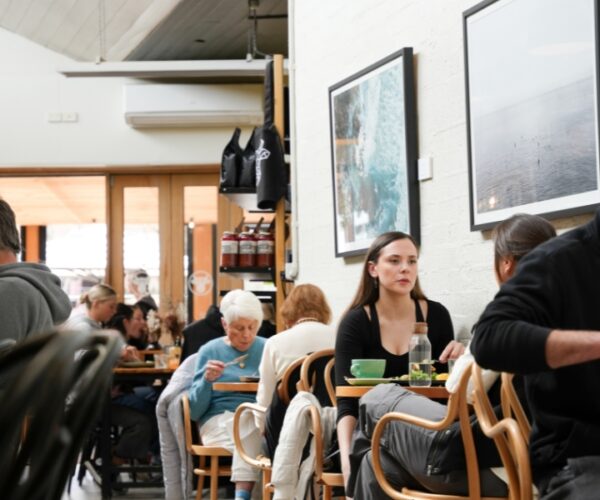Mastering Social Media for Small Hospitality Businesses: Insights from The Winey Cow
Hi everyone, my name is Jade Bremner as I recently had the pleasure of speaking at an Academy Session held by the amazing Paradox Coffee Roasters. The purpose of this session was to share some tips on how to utilise social media as a marketing tool for cafes and restaurants. As the Head of Marketing, Sales and Training at The Winey Cow in Mornington, Victoria and Main Beach, Queensland, this has been a large focus of mine. Our brand evolution has been an exciting journey, which has influenced the way that we market our brunch restaurant. Here are some of the questions I was asked, and some of the insights I shared into how we ultilise social media and digital marketing, and how these strategies can help other small hospitality businesses thrive.
How do you establish a café’s brand, look & feel, and how critical do you think this is to any business?
When The Winey Cow in Mornington first opened a decade ago, it was a Wine & Cheese bar, and that’s where our name originated. However, our vision quickly shifted, and we transitioned into what is now an award-winning brunch restaurant. Establishing our brand vision & core values has been crucial in this evolution and I recommend making this a priority in your business.
Defining Our Brand: Vision and Values
Understanding our brand’s vision and values has been essential. At The Winey Cow, our vision is clear: we aim to be the number one choice for brunch and for employees. To support this vision, we live by our core values, summarized in the acronym W.I.N.E.Y.:
Welcoming: We create a warm, friendly atmosphere for everyone.
Innovative: We stay ahead of trends and continually improve.
Nourishing: We build strong relationships through quality products, feedback and communication.
Excellence: We commit to top-notch food, service, and attitude.
Yes, we can: We embrace challenges with a proactive and solution-focused mindset.
These values are not just internal principles; they shape how we present ourselves visually and interact with our audience. Ensuring these values are communicated clearly across all touchpoints, including social media, helps us maintain a consistent and compelling brand image.
What should a cafe’s preferred social media platform be and why?
My personal favorite social media platform is Instagram, mainly because of its reels feature, which offers substantial reach and engagement potential. However, the best platform for your business should align with where your target audience spends their time.
For instance, Facebook is effective for reaching women in their late 30s to 50s, who often decide where to dine. In contrast, Instagram caters to a younger demographic, making it ideal for promotions targeting millennials. At The Winey Cow, we use Instagram for our Boozy Brunch offers, which appeal to younger audiences, while Facebook helps us connect with a broader age range.
The Winey Cow uses one social media account for two locations, why did you choose this approach?
When we opened our second location, we decided to manage both venues under a single social media account. This strategy allows us to leverage our established brand presence and appeal to travelers (on the Mornington Peninsula or on the Gold Coast) familiar with The Winey Cow.
However, if your new venue has a distinct brand identity, it might be better to create separate accounts. This ensures that each location maintains its unique voice and engages more effectively with its local audience.
How much time should a restaurant dedicate to social media and what time of the day do you create?
I dedicate around 3-5 hours a week to social media, which includes content creation, engagement, and scheduling posts. I prioritize shooting content in natural light to ensure high-quality visuals. Scheduling posts according to audience activity is also crucial. For example, if I am trying to target school mums to buy an afternoon coffee, I will schedule a post to go live around 2:30-3pm when they are in the car waiting for their children to come out of school. Similarly, if I am targeting people to come in for breakfast, I will schedule posts for the first thing in the morning when they wake up.
Driving Engagement: Effective Strategies
From my experience, personal connection is key to driving engagement. Here are some strategies that have worked well for us:
– Reels Featuring Staff: Introducing team members helps humanise our brand.
– How-Tos: Sharing behind-the-scenes content, like plating our best-selling dishes, resonates well with our audience. They like seeing exclusive content that they usually wouldn’t see.
– Competitions: Engaging our audience with fun contests, such as seasonal photo challenges, can boost interaction.
– Local Community Posts: Posting in local groups helps promote special events and build community support.
These tactics not only increase visibility but also foster a sense of community around our brand.
Investing in Digital Marketing: SEO vs. Social Media Ads
Currently, we don’t invest in social media ads, but we’ve focused on improving our SEO with a new website. SEO is crucial for ranking higher in search results, especially in tourist-heavy areas. By optimizing our website, we ensure that potential customers find us when searching for relevant keywords like “café Main Beach” or “bottomless brunch Gold Coast.”
For those on a tighter budget, I recommend using blogs to enhance SEO. Write about topics relevant to your business and include keywords to improve your site’s search ranking over time. Regularly updated content helps you stay competitive in search results.
Measuring Success and Return on Investment (ROI)
Even if you’re running free social media campaigns, measuring their effectiveness is essential. I conduct monthly reports to evaluate the success of our campaigns, social media posts, website performance, and Google Business Profile. Tools like Meta Business Suite are invaluable for analyzing engagement rates and content performance.
Overcoming Challenges: Learning from Mistakes
Not every marketing effort goes as planned. For example, we once launched a $20 voucher campaign with local sporting clubs, but it resulted in minimal redemptions. This experience taught us the importance of targeting campaigns within a closer radius and focusing on repeat business.
A successful initiative has been our Birthday Club campaign. By offering free meal vouchers during customers’ birthday months, we’ve built a valuable database for targeted marketing and encouraged repeat visits.
The Role of Google and Reviews
Google plays a crucial role in our online presence. We maintain an updated Google Business Profile with accurate menu details, hours, and photos. Additionally, I post regular updates and respond to reviews—both positive and negative—to build trust and enhance our brand’s reputation.
Responding to Reviews
Responding to reviews is part of my weekly routine. If we receive negative feedback, I address it promptly, apologize, and offer solutions. Even if the customer doesn’t take up the offer, this approach helps establish trust and improve our brand’s reputation as reviews are often read by others when looking where to dine.
Advice for Cafés Getting Started on Social Media
For those new to social media, here’s my advice:
– Post Daily: Regular posting keeps your audience engaged and informed.
– Ensure Quality Photos: Clear, bright photos are crucial. If necessary, hire a professional photographer.
– Focus on Connection: Share photos of staff and customers to build a personal connection.
– Include Calls to Action (CTAs): Encourage engagement with clear CTAs in your posts.
While social media is not the sole focus of marketing, it’s excellent for enhancing visibility and building your brand’s reputation.




Great read! I appreciate the clear explanation and thoughtful insights. Looking forward to more content like this
Sea Freight Forwarder
Great article! I really appreciate the clear and detailed insights you’ve provided on this topic. It’s always refreshing to read content that breaks things down so well, making it easy for readers to grasp even complex ideas. I also found the practical tips you’ve shared to be very helpful. Looking forward to more informative posts like this! Keep up the good work!